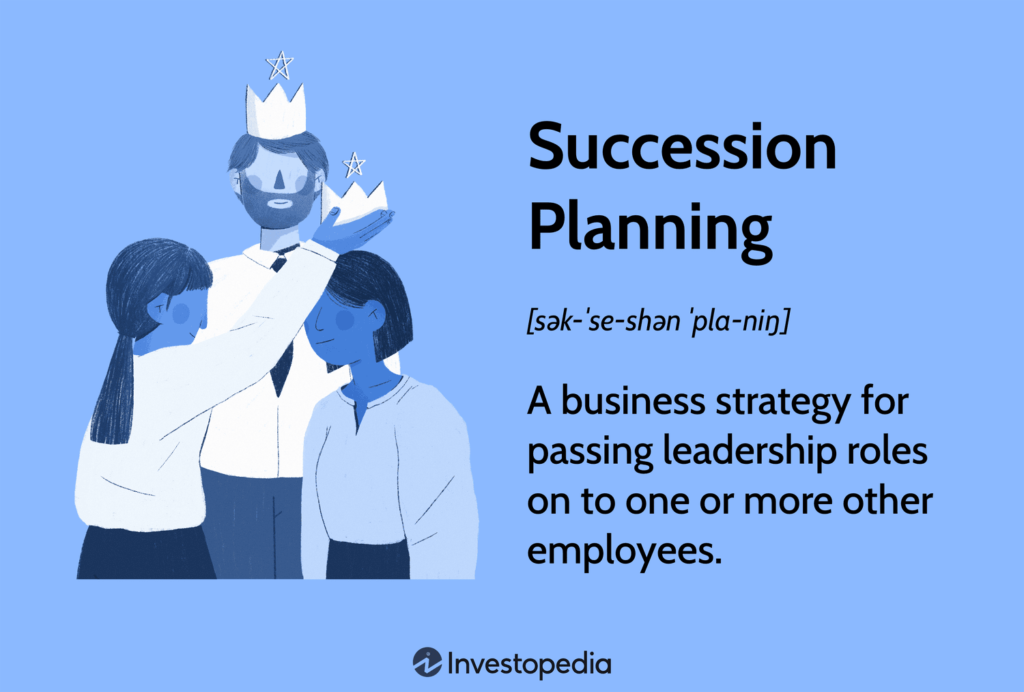
In the ever-evolving landscape of businesses, where current leaders steer the ship towards success, the unpredictable nature of the future casts an inevitable shadow. Amid this uncertainty, the concept of succession planning emerges as a pivotal strategy, offering a lifeline for organizations to navigate through uncharted waters.
The term “succession planning” encapsulates a proactive business strategy, meticulously designed to hand over the reins of leadership to another set of capable hands within the organization. This practice involves the identification and cultivation of potential leaders, ensuring the seamless continuation of essential functions even amidst transitions caused by new opportunities, retirements, resignations, or unfortunate passings.
The scope of succession planning is broad, encompassing diverse tiers of leadership within an organization. Its primary goal is to mitigate potential disruptions that can stem from abrupt shifts in leadership. By preparing individuals to step into key roles, organizations can safeguard the preservation of knowledge, skills, talents, and experiences. This proactive approach not only decreases negative outcomes that may arise due to leadership gaps, such as confusion and decreased morale, but also shields against potential financial setbacks.
Crafting a successful succession plan is an intricate art that hinges upon several elements:
At its core, succession planning commences with the discernment of employees who show the potential, skills, and attributes required for leadership roles. This selection process delves into both technical competencies and innate leadership qualities, often categorizing these individuals as “high-potential” or “high-performing.”
Clarity is paramount when it comes to defining roles and responsibilities in minute detail. The expectations should be coupled with measurable and quantifiable performance metrics, a transparency that not only guides aspiring leaders but also cultivates a sense of readiness. Organizations must further invest in the professional development of these candidates through training, mentoring, and coaching them for the challenges of their imminent leadership roles.
Succession planning is a dynamic and continuous process, necessitating periodic appraisals, assessments, and adaptations. As business needs evolve and new talents emerge, the plan must evolve in tandem. Constructive feedback becomes the compass guiding the refinement of skills, addressing areas of improvement, and bolstering strengths, all of which are crucial for the journey towards leadership.
Job rotation emerges as a strategic tool, exposing potential successors to different departments and roles within the organization. This exposure creates a holistic understanding of the organization’s operations, fostering resourcefulness, flexibility, and adaptability.
Anticipating the unexpected, organizations must identify and groom backup successors. These individuals act as a safety net, ensuring a seamless transition of power and a safeguard against potential disruptions. The successors are expected to formulate a strategic plan, complete with milestones, timelines, and goals, charting their path towards future leadership roles.
In the tapestry of succession planning, numerous benefits are woven:
Succession planning serves as a repository for institutional knowledge and expertise, ensuring a smooth transference to the next generation of leaders.
Amidst leadership transitions, succession planning stands as a beacon of stability, sustaining the long-term viability of the organization.
A well-executed succession plan reduces disruptions during leadership changes, preserving the rhythm of daily operations.
With avenues for growth and progression within the organization, employees are more likely to remain committed and dedicated.
Internal succession reduces the need for expensive external recruitment, as internal candidates are well-versed in the organization’s culture and operations.
In a realm characterized by ceaseless change, organizational preparedness for the unknown is paramount for survival and growth. Succession planning emerges as a barricade against disruptions and uncertainties, ensuring that an organization’s leadership remains steadfast. By recognizing and nurturing upcoming leaders, organizations can deftly navigate leadership transitions, paving the way for ongoing success in the dynamic business landscape.


